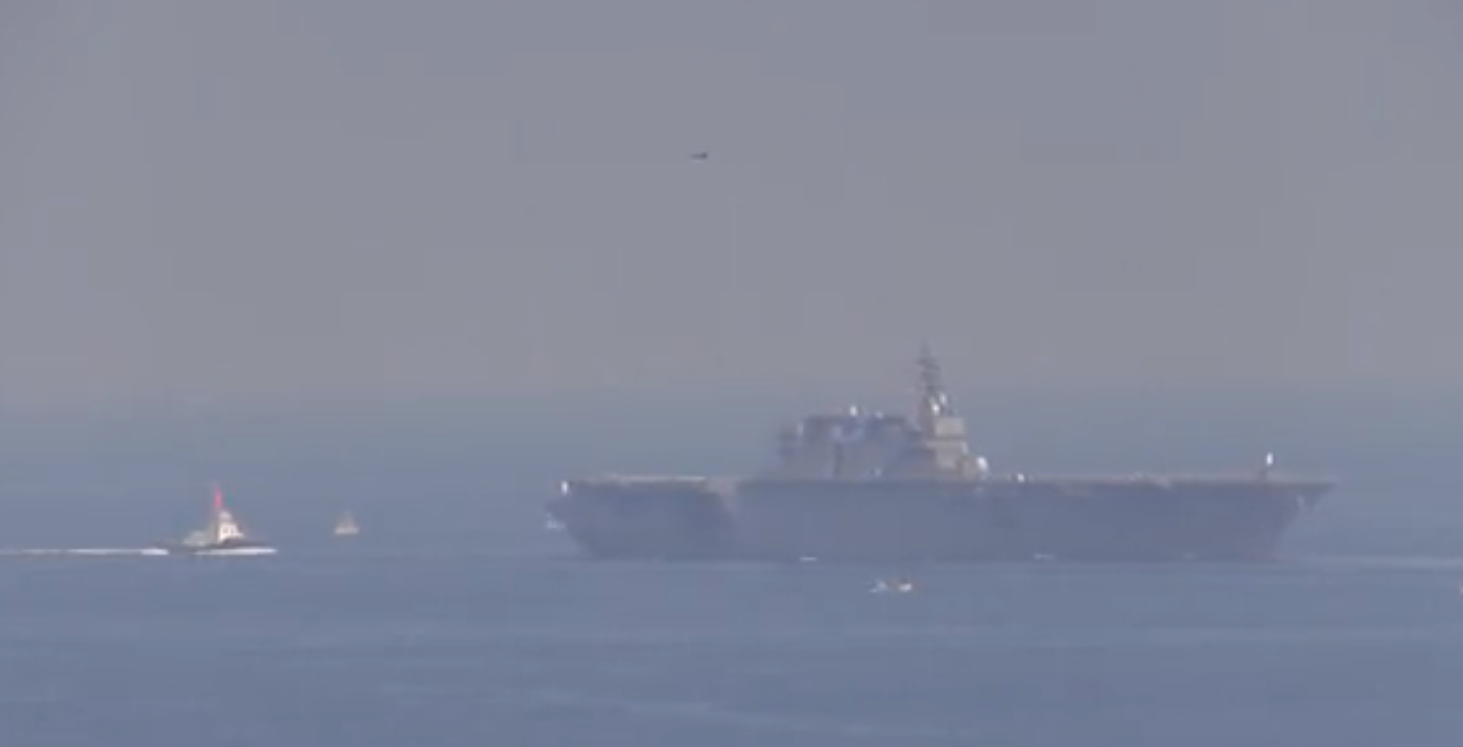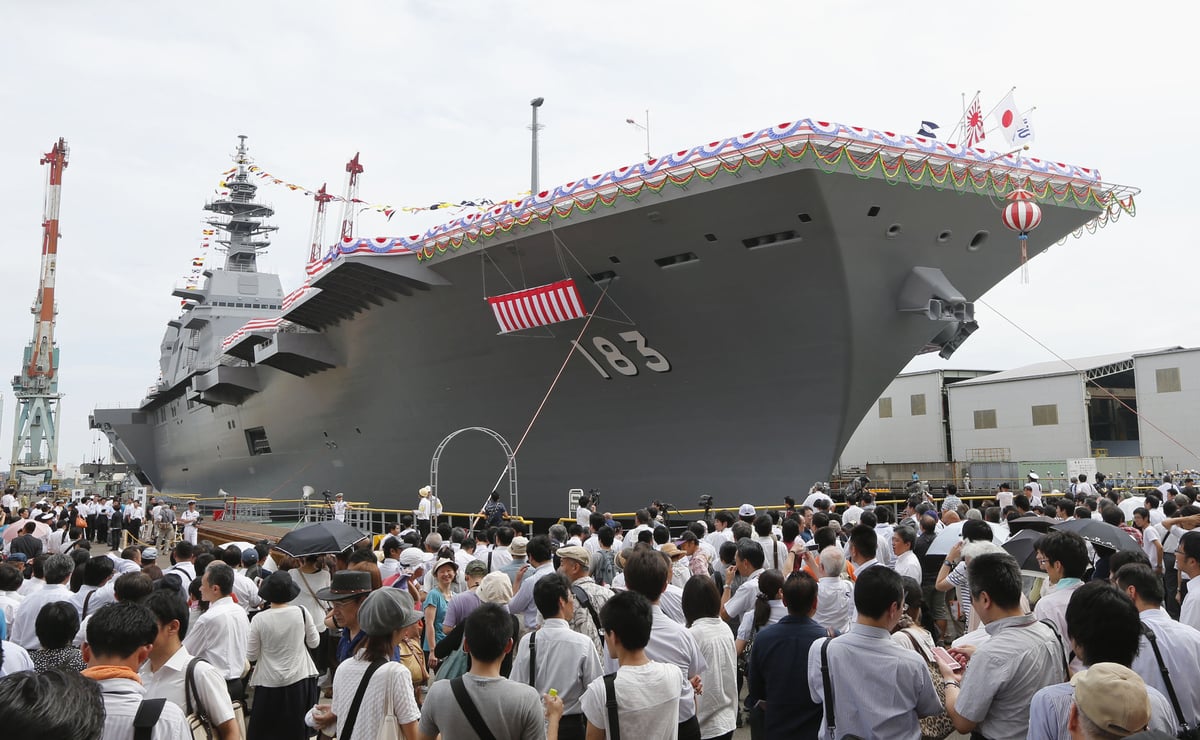
Japan’s largest warship since World War II has left for its first set of sea trials last week ahead of entering the Japanese Maritime Self Defense Force (JMSDF) fleet next year.
JS Izumo (DDH-183) departed Tokyo Bay on Sept. 23, as seen as in a video on YouTube, for the first round of what will be about six months of sea trials ahead of the ship’s commissioning next year, a JMSDF official told Jane’s Defence Weekly on Monday.
The 24,000-ton helicopter carrier is the first of two planned ships. Izumo will enter the JMSDF force next year. DDH-184 will enter the fleet in 2017, according to the Naval Institute’s Combat Fleet’s of the World.
The development pair of ships have fomented regional controversy since the formal start of the program, in part because of their strong resemblance to aircraft carriers
“It is an aircraft carrier, and Japan just called it a helicopter destroyer to downplay its aggressive nature,” Zhang Junshe with the People’s Liberation Army Naval Military Studies Research Institute told China Daily last year.
To Japan’s neighbors, even the name Izumo is a loaded word.
“The original Izumo, an armored cruiser that participated in the Battle of Tsushima, was purchased with reparations from the first Sino-Japanese War,” wrote USNI News contributor Kyle Mizokami last year.
“There is little doubt all parties, particularly the Chinese, are aware of the lineage.”
Though billed by Japan as primarily an anti-submarine warfare (ASW) and humanitarian and disaster relief (HADR) platform, its character is more in line with the U.S. Navy’s America-class of amphibious warships.
Izumo is large enough to field 14 helicopters and has the capacity to carry 400 troops. Japan could also field V-22 Osprey tilt-rotor aircraft from the ship. Ospreys are used by U.S. Marines to deploy troops from the sea and were successfully test onboard Japan’s Hyuga-class DDHs in 2013.
It’s conceivable the helicopter carrier could also accommodate the short takeoff/ vertical landing (STOVL) variants of the F-35 Lighting II Joint Strike Fighter (JSF) but Japan has said publically it has no intentions of fielding JSFs from the ships.
But — like the aviation centric America — the ship is not equipped with a well deck to deploy troops via landing craft.
Following World War II, the Imperial Japanese Navy was largely sunk and its pacifist constitution only allowed for military force in a direct threat to the country.
However in the last year, Japan’s Prime Minister Shinzo Abe has led a push to expand the scope of Japan’s military cooperation and its ability to develop its military export industry.






